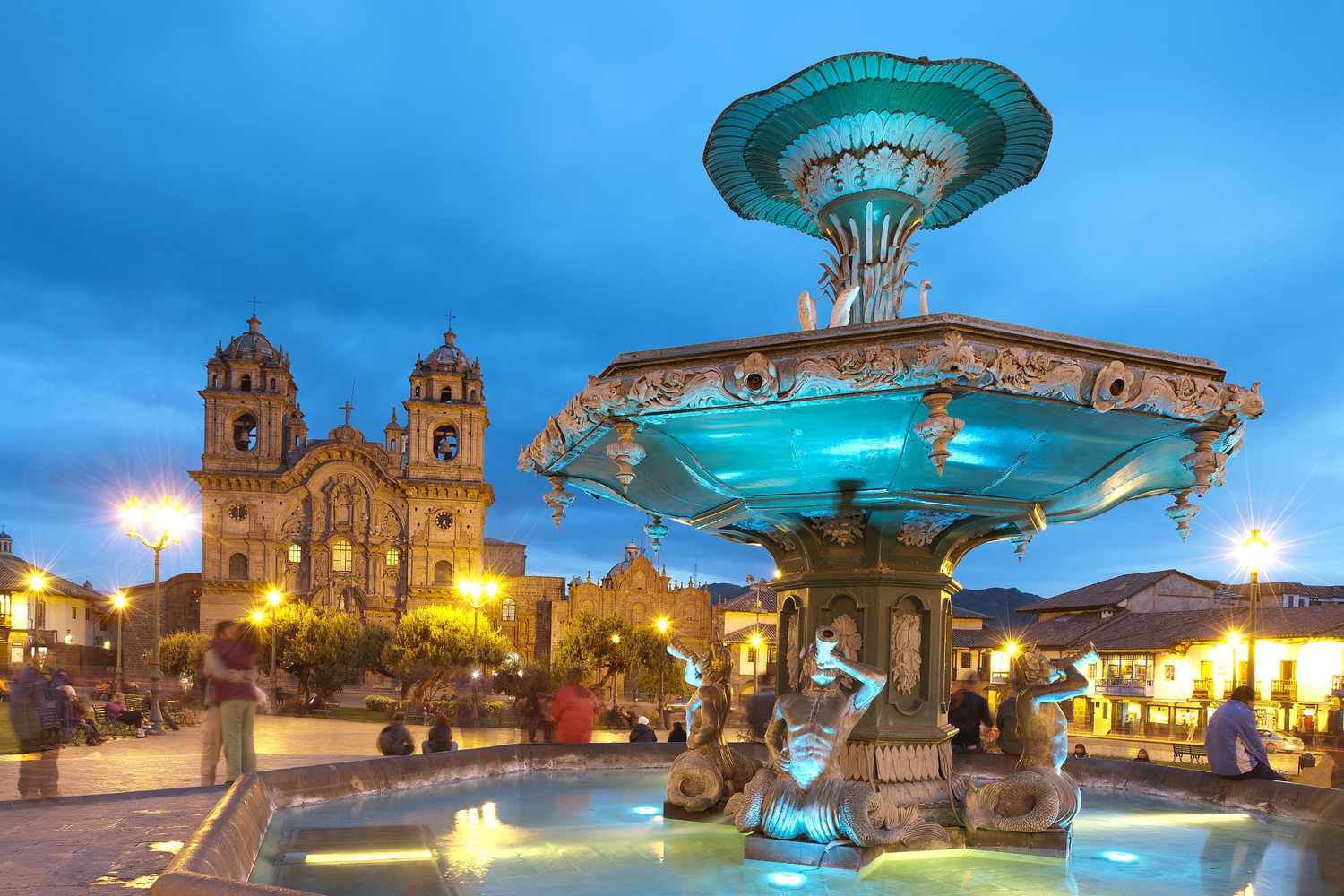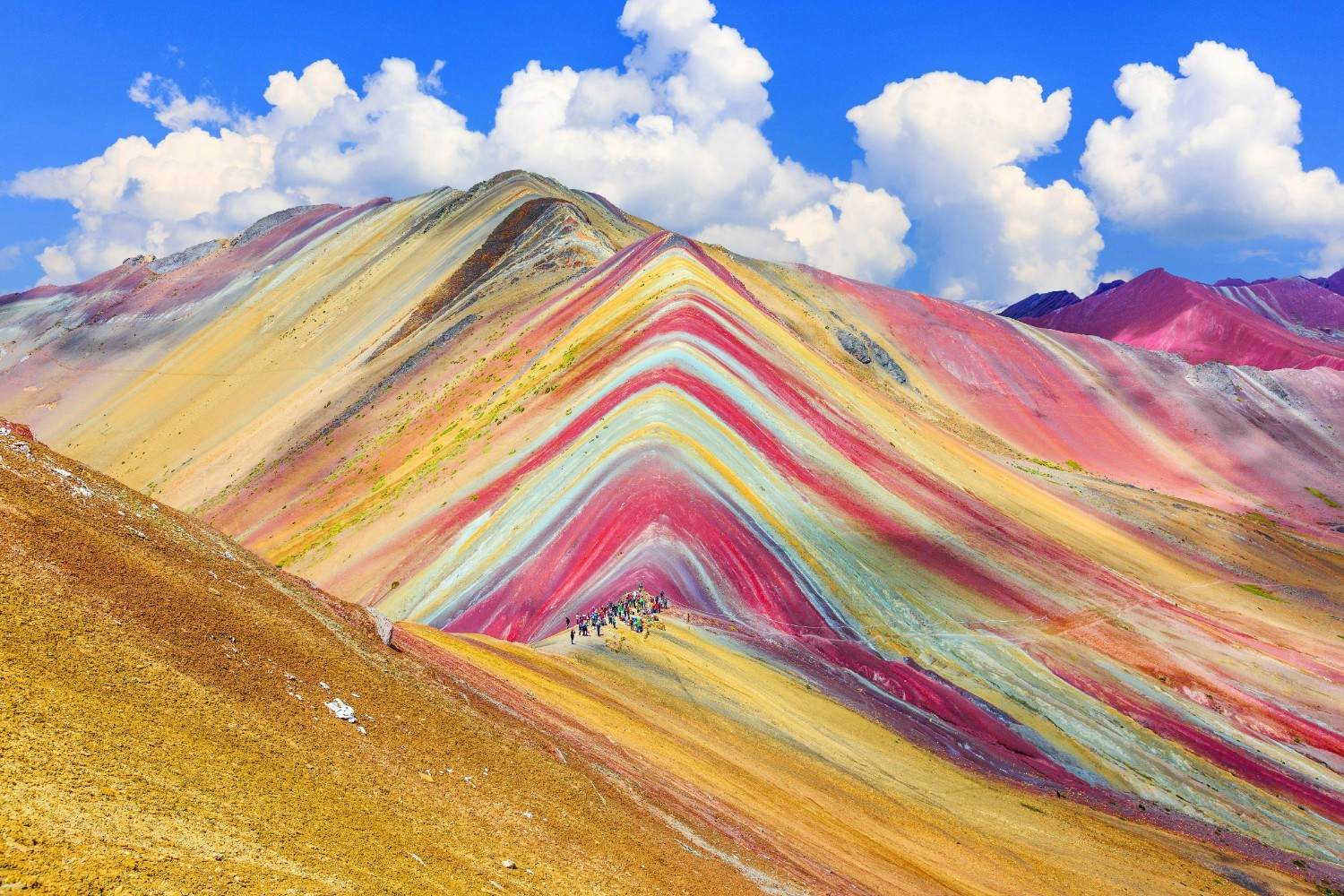



Cusco, a city in the Peruvian Andes, was once capital of the Inca Empire, and is now known for its archaeological remains and Spanish colonial architecture. Plaza de Armas is the central square in the old city, with arcades, carved wooden balconies and Incan wall ruins. The baroque Santo Domingo Convent was built on top of the Incan Temple of the Sun (Qoricancha), and has archaeological remains of Inca stonework.
Overview: This period is characterized by sunny days and minimal rainfall, making it ideal for outdoor activities like trekking and exploring archaeological sites.
Weather: Daytime temperatures average around 16°C (61°F), while nights can be chilly, often dropping to 0°C (32°F) in June and July.
Tourism: June to August is peak tourist season due to favorable weather and festivals, leading to higher prices and crowded attractions.
Festivals: Notably, Inti Raymi, the Inca Festival of the Sun, is celebrated on June 24th, offering a vibrant cultural experience.
Overview: This season brings frequent rain showers, leading to lush landscapes but potentially muddy trails.
Weather: While days are slightly warmer, the consistent rainfall can disrupt outdoor plans.
Tourism: Fewer tourists visit during this time, which can mean lower prices and less crowded sites.
Considerations: Some trekking routes may be closed or challenging due to rain, and certain festivals are less prevalent.
Overview: These transitional periods offer a balance between favorable weather and manageable tourist numbers.
Weather: Generally pleasant with fewer rain showers, making it suitable for sightseeing and outdoor activities.
Tourism: Moderate tourist levels mean easier access to accommodations and attractions without the peak season crowds.
Best Overall Time: May to September for optimal weather and cultural events.
Best for Avoiding Crowds: April–May and September–October.
Best for Budget Travelers: November to April, keeping in mind the increased rainfall.
By Air:
Fly into Alejandro Velasco Astete International Airport (CUZ) in Cusco from Lima or other major South American cities.
Most international travelers connect through Lima (Jorge Chávez International Airport) before heading to Cusco.
By Bus:
Long-distance buses from Lima, Arequipa, or Puno are available, though journeys can take 10–20 hours.
Well-known operators include Cruz del Sur and Oltursa for comfortable service.
By Train:
Not directly to Cusco city from far cities, but train options (PeruRail, IncaRail) are used to access Machu Picchu from nearby towns like Ollantaytambo.
Machu Picchu – Iconic Inca citadel reached by train or multi-day trek.
Sacsayhuamán – Impressive Inca fortress overlooking the city.
Plaza de Armas – Historic center with colonial architecture and vibrant atmosphere.
Qorikancha (Temple of the Sun) – A blend of Inca and Spanish colonial architecture.
San Pedro Market – Lively market with local food, crafts, and culture.
Sacred Valley – Scenic region with towns like Pisac and Ollantaytambo full of ruins and views.
San Blas Neighborhood – Artsy district with narrow streets, cafes, and local artists.
Moray & Maras Salt Mines – Fascinating agricultural terraces and salt pools nearby.
Trekking: Inca Trail, Salkantay Trek, Lares Trek for outdoor adventure to Machu Picchu.
Cultural Tours: Learn about Inca history, colonial fusion, and traditional Andean life.
Cooking Classes: Try your hand at making Peruvian dishes like ceviche or lomo saltado.
Adventure Sports: Zip-lining, white-water rafting, and mountain biking in the Sacred Valley.
Photography: Capture sweeping views, cobbled streets, and ancient architecture.
Shopping: Buy alpaca wool products, silver jewelry, and handmade crafts.
Attend Festivals: Experience colorful local festivals like Inti Raymi or Corpus Christi.
Budget:
Hostels & Guesthouses: Affordable options with shared dorms and private rooms; common in San Blas and near Plaza de Armas.
Examples: Pariwana Hostel, Kokopelli, or basic family-run hospedajes.
Mid-range:
Boutique Hotels: Charming spots with Incan architecture and modern amenities.
Popular Areas: San Blas (artsy and quiet), Historic Center (close to everything).
Luxury:
High-End Hotels: Restored colonial mansions or former monasteries with top-tier service.
Top Picks: Belmond Palacio Nazarenas, JW Marriott El Convento Cusco.
Traditional Dishes to Try:
Cuy (guinea pig): A traditional delicacy, often roasted.
Lomo Saltado: Stir-fried beef with Peruvian-Chinese fusion flavors.
Aji de Gallina: Spicy shredded chicken in a creamy yellow sauce.
Alpaca meat: Lean and tender, served grilled or in stews.
Choclo con Queso: Giant corn with fresh cheese — simple and tasty.
Popular Restaurants:
Pachapapa: Traditional Andean food in a lovely courtyard setting (great for trying cuy or alpaca).
Chicha by Gastón Acurio: Upscale Peruvian cuisine with modern flair.
Green Point: Excellent vegan/vegetarian cuisine, loved by locals and travelers.
San Pedro Market Stalls: Budget-friendly and authentic — perfect for breakfast or lunch.
Language & People:
Main languages are Spanish and Quechua.
Locals are warm and often wear traditional Andean clothing, especially in rural areas.
Customs & Etiquette:
Greeting with a friendly “Buenos días” or “Buenas tardes” is appreciated.
Bargaining is common in markets, but done politely.
Tipping is expected (around 10% in restaurants).
Festivals & Traditions:
Inti Raymi (June 24): Re-enactment of the Inca Sun Festival with grand ceremonies.
Corpus Christi: Religious processions blending Catholic and Indigenous beliefs.
Semana Santa (Holy Week): Celebrated with parades, music, and floral decorations.
Arts & Crafts:
Known for intricate textiles, hand-woven alpaca clothing, ceramics, and silver jewelry.
Traditional music and dance often feature pan flutes and vibrant costumes.